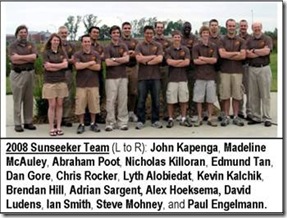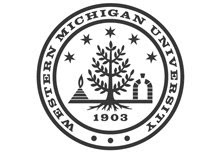On Aug. 1, Dr. Tim Greene, who has served as CEAS dean since April 2005, assumes the position as WMU provost and vice president for academic affairs.
Last week, WMU announced that Dr. Dan Litynski – a professor in the Department of Electrical and Computer Engineering who has served as CEAS dean, WMU provost, and interim WMU president – will serve as CEAS dean for 11 months while a 15-member WMU team searches for a new CEAS dean.
Litynski was CEAS Dean from 1999-2002, a period of increased CEAS student enrollment, new programs and accreditations, the conception and construction stages of the new 270-acre CEAS Parkview Campus, and the early development of the Business, Technology, and Research Park. He recently spent three years at the National Science Foundation as program director for physics and director of the Division of Undergraduate Education.
A retired U.S. Army Brigadier General, Litynski has spent over 25 years researching and teaching more than 20 courses in electrical engineering, optics, and physics. His research specialties are lasers, photonics, and electro-optics. Before coming to WMU, he was professor in and later head of the Dept. of Electrical Engineering and Computer Science at the U.S. Military Academy at West Point.
His education includes Ph.D. and BS degrees in physics from Rensselaer Polytechnic Institute (RPI), and a MS in optics from the University of Rochester. He is also a graduate of the Army Command and General Staff College and the Industrial College of the Armed Forces of the National Defense University.
Litynski is looking forward to serving as dean, and then he plans to return to the faculty next July. “This is a wonderful opportunity to serve our great college and faculty once again and help during the transition,” he said.
Greene, who was selected as WMU’s provost last spring, credited the CEAS community for his promotion. “I am now the provost because of the excellent contributions of the CEAS faculty, staff, and students,” he said. “One of the reasons I was promoted was because I got credit for the hard work, dedication, and accomplishments of so many here at the college.”
WMU’s CEAS DEAN Search Committee and Schedule:
Chair Joseph Reish, (Dean of the Libraries); Margaret Joyce (PCI), Massood Atashbar (ECE), Ajay Gupta (CS), Betsy Aller (IME), Koorosh Naghshineh (MAE), Jun Oh (CCE), Paul Englemann (IME Chair), Don Nelson (CS Chair), Sue Ketchum (Staff), Pat Resetar (Staff), Carl Roberts (EBOV/alum), Bob Miller (WMU), Sarah Gerbig (MAE undergraduate), and a graduate student to be determined
A tentative schedule…
September 1st – Publish advertisements for CEAS dean
October 15th - Begin screening candidates
December – Conduct airport interviews
December 20th – Announce on-campus candidates
January / February – Conduct on-campus interviews
March 31st – Announce a new CEAS dean
July 1st – Welcome the new CEAS dean
Everyone is encouraged to nominate candidates whose identities will remain confidential until announcement of the final list in December. Interviews will be open and everyone is also encouraged to provide input regarding the final selection. The CEAS Executive Committee is preparing an announcement that will be submitted to several publications and posted on the Web. Detailed information and application procedures are available at www.wmich.edu/hr/careers-at-wmu.htm
Before coming to WMU, Greene was assistant vice president for research and academic affairs at the University of Alabama where he had served as Dean of Engineering from 1999 to 2004. His experience includes heading up the School of Industrial Engineering and Management and being associate dean of research at Oklahoma State University and serving on the faculty at Virginia Tech. He has MS and Ph.D. degrees in industrial engineering and a BS in aeronautical and astronautical engineering from Purdue.
Greene encouraged the CEAS community to get involved in the process of selecting a new dean.
“I’m challenging them to think of the characteristics they want in the next dean and to seek and encourage good faculty to apply for the position,” he said. “One of the reasons I came here is the strong encouragement I received from the faculty, and I hope they will do the same for the next candidates.”


![clip_image002[4]](http://lh4.ggpht.com/WMU.IME/SI4yH8_yMnI/AAAAAAAAAms/rQUhzxGx4iE/clip_image002%5B4%5D_thumb.jpg?imgmax=800)
![clip_image002[6]](http://lh5.ggpht.com/WMU.IME/SI4yIh9Ed7I/AAAAAAAAAm0/NJ3gVIyJLVk/clip_image002%5B6%5D_thumb.jpg?imgmax=800)

![clip_image002[7]](http://lh6.ggpht.com/WMU.IME/SI4wKr7RtPI/AAAAAAAAAmc/7Da-RxRzy2E/clip_image002%5B7%5D_thumb%5B1%5D.jpg?imgmax=800)



